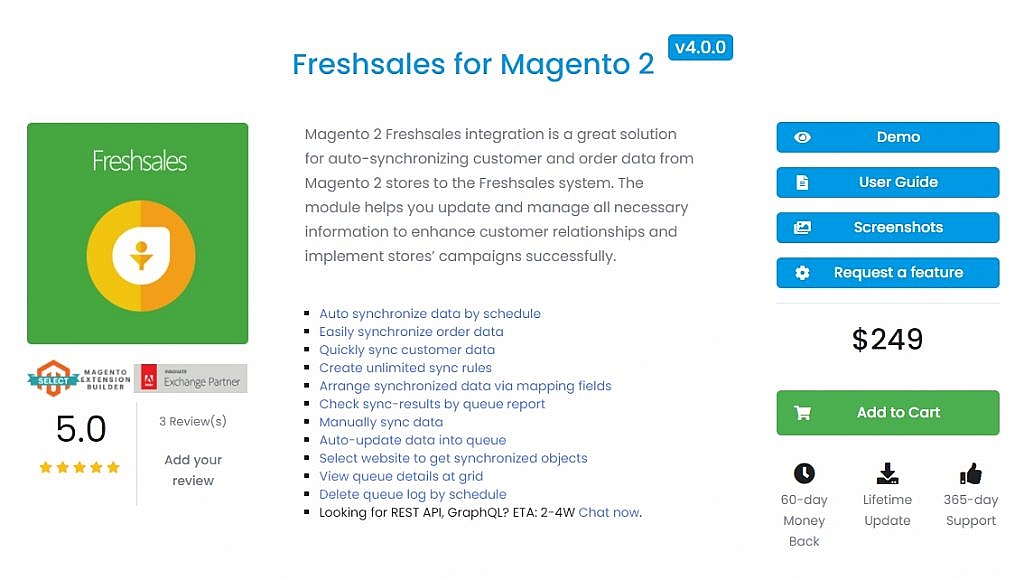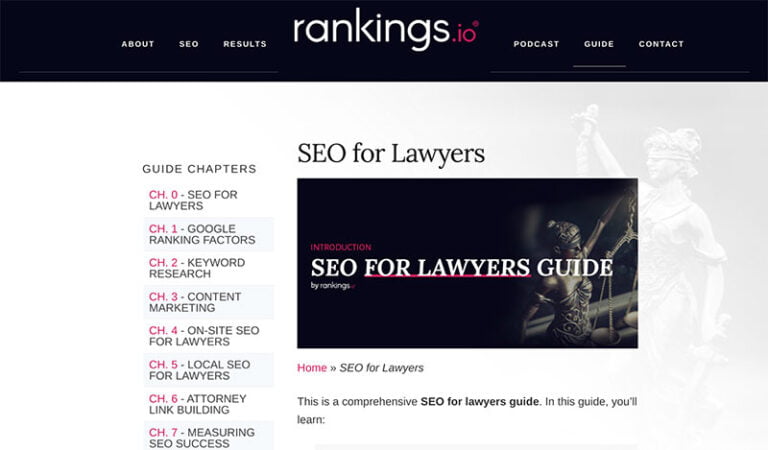If you’re just starting out your business on Magento 2, you might be seeking ways to drive as many leads as possible.
Lead generation is a constant active process aiming to appeal and convert targeted web browsers into qualified leads. The process requires a variety of tools, marketing services, and a substantial investment of time and money.
In the following article, we’re going to share with you the top lead generation techniques for your Magento 2 store.
What is a Lead?
Table of Contents


A lead is any person who has some interest in a brand’s product or service in some way, shape, or form.
Leads (or prospects) often hear from a business or company after opening communication (by entering personal details for an offer, trial, or subscription) rather than receiving a random cold call from someone who bought their contact information.
Suppose you read an online survey to know how to take care of your air purifier. Several days later, you get an email from the auto company that generated the survey about how they could help you take care of your air purifier. This process will not be less intrusive than if they would make a phone call for you, right? This is what it’s like to be a prospect.
And from a business view, the details the brand collects about you from your survey responses allow them to personalize that opening communication to resolve your current issues – and not waste time calling prospects who aren’t at all engrossed with auto services.
Leads belong to the wider lifecycle that customers follow when they convert from visitors into shoppers. Not all leads are generated equal, or they’re not qualified the same. There are some sorts of leads based on how they are qualified and which lifecycle step they’re in.
- Marketing qualified leads (MQL) are customers who’ve engaged with your marketing department’s attempts but aren’t ready to get a sales call. An example of an MQL is a person who fills in a landing page form for an offer.
- Product Qualified Lead (PQL) are people who’ve experienced your product and take actions that show interest in becoming a paying shopper. Basically, this involves shoppers experiencing a freemium item or signing up for a free month of your goods or service.
- Sales Qualified Lead (SQL) are customers researched, screened, and evaluated by your marketing team. They have expressed sufficient intrigue in purchasing an item or service so that you can concentrate on moving them toward conversion. For instance, an SQL may fill out a web form on your site for more information or sign up for your brand’s email newsletter.
- Service Qualified Leads are contacts who have told your customer service team and claimed that they want to make a purchase – like if they were experiencing a free version of your goods and would like to move to the premium version. At this time, the customer service team will up-level this customer to the sales team.
What is Lead Generation?
Lead generation is the process of appealing leads to your brand and turning them into customers – usually deployed through marketing campaigns supported by marketing automation – driving potential customers to your company. It provides interesting access to digital marketing as it converts the typical customer to business relationship.
Instead of exploring your Magento 2 via a cold call, customers engage as they find something they need via one of your online channels. This is a benefit for businesses and shoppers alike, as the people who come to you already comprehend your offerings’ value.
However, despite potential business advantages, lead generation can be challenging to do efficiently, particularly if you’ve never utilized this marketing method before. Nevertheless, it’s truly worth learning. Lead generation brings you a chance to find more consumers and develop your business during the sales cycle. If you would like to promote your newly-operated business or renovate your strategies, lead generation should be a big part of your endeavors.
How Many Steps in The Lead Generation Process?


There are four different steps of the lead generation process.
- Step 1: A visitor learns about your online store via one of your marketing channels, including your website, social media page, etc.
- Step 2: That visitors choose your call to action – a picture, button, or message that motivates website visitors to take some action.
- Step 3: That call to action directs your visitor to a landing page, which is a web page created to collect lead information in exchange for an offer.
Notice: An offer is the content or something of value that’s being “provided” on the landing page, like a whitepaper, an ebook, a template, or a course. The offer must contain enough perceived value to a browser for them to submit their personal details in exchange for access to it.
- Step 4. Once on the landing page, your visitor completes a form to take the offer. (Forms are basically hosted on landing pages, even though they can technically be inserted anywhere on your website.) So you get a new lead provided that you’re employing lead-capture form best practices.
In short, visitors click on a CTA that directs them to a landing page where they fill in a form to receive an offer, at which point they are called leads.
How Can You Qualify a Lead?


As covered earlier in this article, a lead is a person who has shown interest in your brand’s product or service. Now we’ll find out how someone can actually express that interest.
Basically, a sales lead is created via information collection. That information collection could appear as the result of a job seeker evincing interest in a position by filling out an application, a customer sharing contact details in exchange for a discount, or a person submitting a form to get an educational piece of content.
Assess a lead’s level of interest
We’ve collected some ways in which you can qualify someone as a lead. These examples indicate that the amount of accumulated information used to qualify a lead can range.
Job application: An individual who fills in an application form is pleased to share a lot of personal information as that person wants to be regarded for a position. Submitting that application indicates their true interest in the job, hence qualifying the person as a lead for the firm’s recruiting team – not sales or marketing teams.
Content: Content does not show that a person has a direct interest in your goods or services. Thus, to truly comprehend the nature of the person’s intrigue in your company, you might need to gather more data to check whether the person is engrossed in your products and whether they’re a good fit.
Coupon: You may know a little about someone who has used one of your online coupons. However, if they find the coupon worthwhile enough, they’re likely willing to offer their name and email address to get the coupon. Even though it’s not a huge amount of information, it’s enough for a company to know that someone has concerned themselves with its offerings.
Score leads
Scoring lead is a good method to qualify leads. With this technique, leads are assigned to a numerical value (or score) to identify where they fall on the scale from “concerned” to “ready to order“. You are the person deciding the criteria, but it must be the same throughout your marketing and sales team so that every member can work on the same scale.
A lead’s score can be calculated according to actions they’ve taken, the information they’ve offered, their engagement level with your business, or other criteria that your sales department creates. For example, you might give someone a higher score if they often engage with you on social networks or their personal data fits your target audience.
Besides, you likely score a lead higher if they applied one of your coupons – an action showing that this person is engrossed in your product.
The higher a lead’s score, the more likely they become a sales-qualified lead, which needs another step to become a shopper. Notably, you need to adjust the score and criteria all the way long until you identify the best formula, but once you do, you will turn your lead generation into customer generation.
Incredible Lead Generation Techniques for Magento 2
Your brand should be present on social networks. If you’re not, you’re being lagged behind, but it’s not too late for you to catch up with the trend.
Social media is an ideal way to drive new leads and bolster your relationship with existing customers. If you do it in the right way, your followers will promote your content for you by sharing it on their social media accounts and creating new leads for your business. To market yourself on social networks, you had better produce your own content and share content from others.
That eventually makes you more visible to potential clients and enhances your metrics on sites. The key to using social media to promote your company is to generate a dialogue with your consumers.
2. Leverage email marketing
Email can be leveraged as a way to start contacting leads. Effective email marketing outreach begins with an initial email to a potential customer. You should create a list of potential customers and then contact each personally via email to raise a line of communication.
Here are some tips you can apply:
- Generate appealing subject lines – Your open rate is directly affected by your subject lines. If you want your emails to be opened, you need to ensure that you have a good subject line to catch people’s attention.
- Create opt-in offers – Develop offers that provide value (a free trial, free download, product discounts, and several forms of educational content that resolves your customers’ problems).
- Ask leads to take action – Make it simple for leads to follow up. Limit your email to one clear-cut action you want your lead to take, whether it’s clicking through to a link, tapping the “reply” button, or affirming a time for a phone call.
- Make things shareable – Ensure that you include social media buttons so that customers can share your content with ease.
Moreover, you can consider employing email marketing automation to generate more leads for your business. Marketing automation is a powerful hybrid email marketing feature that connects with your CRM and allows you to deliver targeting emails to leads automatically. There are over 480,000 websites that utilize marketing automation to attract and nurture leads.
3. Guest post blogging
You can approach new audiences by accepting guest posts on your own site. There are several approaches you can try, including:
Reach out to bloggers or influencers in your selected market and ask them to create content about your product or service. You’ll probably need to give them some commission, but you can access their following and have a good backlink.
You also can hand these bloggers or influencers free access to your products, exchanging for an honest post and feedback of your products.
Or you can accept guest blog posts for your own website. You can use the following post blogging checklist as your guidelines:
- General themes: Be specific about the post type you can accept. All articles should contain concrete examples of source material to support your conclusions.
- Search engine optimization: Do you want the author to create SEO-friendly content, or will you take care of it?
- Restrictions: Watch out for writers that include promotional materials blatantly. Links to their website or blog should be inserted in the bio at the end of the post. Links directing to relevant content on a blog from the body of the article are acceptable but should not be unnaturally promotional.
- Content guidelines: You should get specific about the details. For instance, the article’s length: 600+ words, post titles: initial caps, no more than 70 characters in length, etc.
4. Build a rewards system
You can consider building a rewards system where your shoppers drive leads to you in exchange for an appealing offer. Shoppers value and trust suggestions from their friends, so motivating current clients to spread the word about your business can be a clever way to fill your lead funnel.
For instance, sunglasses company Shady Rays makes their existing customers create leads by asking them to offer an email address of someone they think will love the brand. In exchange, the brand pays $15 for the current customers if the lead places an order.
5. Optimize your website
To create more leads, ensure website visitors can find your lead magnet with ease. Design on-site funnels that group your audience and take them towards the lead magnet most likely to resonate with their demands and concerns. You can do this by promoting lead magnets around your website.
- Emphasize it as the main homepage call to action
- Promote relevant lead magnets at the end of pages and blog posts
- Employ a lead generation popup
- Build a resource library full of gated content
- Insert a lead gen hello bar that stays at the top or bottom of your website
- Promote your lead magnet in the sidebar
For instance, Podio – a project management tool – doesn’t guide website browsers to their lead magnet. Instead, they instantly drive users into their free trial using the main hero section of their homepage.
6. Use PPC
As we mention pay-per-click (PPC), we’re referring to advertisements on search engine result pages. Google has about 3.5 billion searches per day, making it ideal real estate for any ad campaign, particularly lead generation. The efficacy of your PPC campaign depends significantly on a smooth user flow, as well as your budget, target keywords, and many other factors.
7. Install a Magento 2 extension
Freshsales extension
Freshsales is a robust CRM (customer relationship management) system established by Freshworks. It allows every business type to engage, manage, analyze, and nurture their leads. With the Freshsales integration extension, store owners only need to arrange a schedule and sync rules; then the system will handle the rest.


The module also enables Magento 2 stores to decide which data is synchronized to which objects on Freshsales, which can be different for every sync rule. This function makes it flexible to match data between two systems, ensuring precise information allocations.
Moreover, store admins can draw a schedule to update customers and order information constantly. Hence, Freshsales can use the newest information to take care of their shoppers more attentively in real-time.
Does Your Business Need Lead Generation?
If your calendar is empty and you want to run your business instantly, you can expand your business dramatically via lead generation, no matter what the price is. It can be like a gamble somehow, which is why selecting your target audience with care is critical.
Lead generation can be a quick way to boost your return on investment and significantly broaden your customer base. Adapt it as you do with other advertising efforts: save a budget to test and check whether it works for your business. The key to triumphantly implementing lead generation is to enhance your sales and marketing skills so that the leads you get convert at a good rate.
Let’s apply those above lead generation techniques to gain more leads for your Magento 2 store. And then don’t forget to share your results with us. We can’t wait to hear from you.
Photo by Austin Distel on Unsplash






